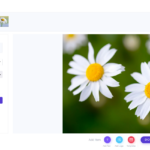Can digital watermarking help protect your work from theft?
If you’re a photographer, you know that one of the most important things to protect is your work. You want to make sure people can’t use it without permission and claim it as their own. One way photographers copyright their work is by digital watermarking. This blog post will teach you how to get started with watermarking so that your photos are protected!

What is Digital Watermarking and Why Do I Need It?
Watermarking images with your company name, logo, or contact information is a great way to protect copyright and reduce the likelihood of someone using your copyrighted work as their own. It’s also important for branding purposes so that people will remember you when they see your website. If you’re still on the fence about whether watermarking is something you need, here are five benefits that might change your mind:
- Protects copyright
- Reduces plagiarism risk
- Promotes brand awareness
- Increases customer loyalty
- Keeps customers coming back
Watermarks are a great way to protect your copyright and reduce the likelihood of someone using your copyrighted work as their own. They’re also important for branding purposes so that people will remember you when they see your company’s website, which can lead to increased customer loyalty in turn.
In addition to these benefits, digital watermarking images helps promote brand awareness and increases customer loyalty because customers come back for more. If you think about it from this perspective, there really is no downside!

How Does Digital Watermarking Work?
The watermark can be applied at various points in the content development process—or it may be embedded into images before distribution to prevent unauthorized copying.
The watermark is typically applied at various points in the content development process—or it may be embedded into images before distribution to prevent unauthorized copying.
A digital watermarking overlay can be an image, text, or other graphics-based design that appears over a digital file when viewed on screen. It’s most often used for photos and documents (such as PDFs) but can also appear with video clips or audio files if desired.
The mark might contain information such as the date of creation, copyright holder, contact email address, and website URL where you want people who find your work online to go should they have any questions about its origin.
Benefits of Watermarking
Do you want to add a watermark to your photos? If so, here are some benefits of adding a watermark.
- Protect your photos from being misused on the internet without credit to you.
- Keep high-quality copies of your photographs just for yourself or share them with a small group of people.
- Make it easier to identify who took a photo if someone asks about it.
- Prevent others from using your photograph as their own work and claiming that they are the original photographer.
Why You Should Be Using a Watermark on All of Your Images
The internet is an amazing place. It’s filled with information, cat videos, and cute pictures of kittens (some more than others). There are literally billions of images being shared online every day. But not all the images you see on your favorite websites actually belong to them!
Some people may steal photos from other sites by downloading them directly or using a photo-sharing site without permission. This can cause problems for website owners because they might be held liable for copyright infringement if someone else uses their content without authorization.
You should be adding watermarks to your images and placing text over any identifiable features in order to reduce the likelihood that someone will steal them from you.

Tips for Digital Watermarking in Different Situations
A watermark is a graphic that you place on the image to indicate copyright and/or ownership. You can use it in different situations, such as adding your logo or website URL to an image that you post online so it’s not easily copied. Here are some tips for digital watermarking in different situations:
If you’re posting photos of your work on social media platforms like Instagram, Facebook, or Twitter – add a small version of your logo to protect against any unauthorized redistribution of the photo.
If you want to share a photo with someone who has limited access to editing software – such as emailing the picture – be sure there is no text obscuring anything important before sending them the attachment. This way, if they want to share the photo with someone else (who may not have access to editing software) they can do so without compromising your copyright.
How to Get Started with Digital Watermarking
Watermarking is a great way to protect your work. It’s fairly simple and straightforward, so it doesn’t take long before you’re on your way to being more creative than ever before. Watermarks are also very versatile; they come in a variety of shapes, colors, fonts, and sizes that can be used on anything from art prints to website graphics.
Here are some tips for getting started with watermarking:
– Always consider the importance of your work when selecting a watermark. If it’s for text, make sure to choose an easily recognizable font such as Arial or Times New Roman. Avoid using cursive fonts that are difficult to read. For images, you may want something more creative like brush strokes drawn with black paint on white paper.
– Experiment with different types of shapes and colors until you find one that suits both your design and purpose. You can also play around with size; if you’re creating a logo for print use, try making it smaller so it doesn’t overpower the lettering too much.
– Choose a font that doesn’t interfere with the message on the photo
– Look at what other people have done and get ideas for fonts, colors, logos, etc.
Final Thoughts About the Importance of Digital Watermarking
In today’s digital age, it is more important than ever to protect your work by adding a digital watermark. With the risk of copyright infringement and plagiarism at an all-time high, you need a way to prove that you are the original creator of any given work. It doesn’t matter if this is artwork or written content – every person needs protection from scammers trying to steal their ideas!

Conclusion
Digital watermarking is a process by which copyright holders can add their own identifying marks to digital media, such as photographs or videos. The watermarks are typically overlayed on the image in an inconspicuous way that will not affect how it looks when published and shared digitally.
Some of the benefits of adding copyright information to your images include: providing attribution for those who may have contributed in some capacity; more easily combating people stealing your work without permission; and having better control over licensing rights for commercial use (versus non-commercial).
Let’s get started with digital watermarking!

































